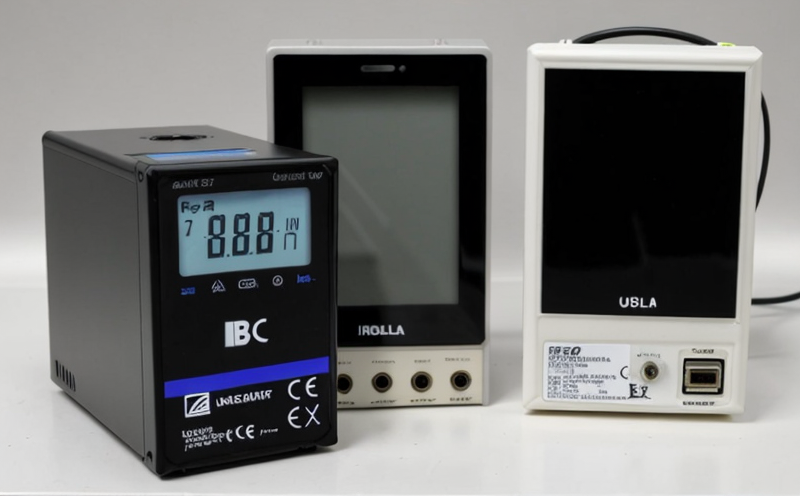UL 62133 Consumer Electronics Portable Battery Safety Testing
The UL (Underwriters Laboratories) 62133 standard is a crucial benchmark for ensuring the safety of portable batteries used in consumer electronics. This standard sets stringent requirements to prevent potential hazards such as overheating, short circuits, and fires that can arise from battery malfunctions.
Consumer electronic devices have become an integral part of our daily lives, ranging from smartphones and tablets to laptops and wearables. The rapid increase in demand for these products has put significant pressure on manufacturers to ensure the safety of their batteries. UL 62133 addresses this need by providing a comprehensive framework that covers various aspects of battery design, manufacturing, and testing.
The standard focuses on several key areas: electrical insulation, mechanical integrity, internal short circuit protection, overcharge protection, and thermal runaway prevention. Compliance with these requirements ensures that the batteries are safe under normal operating conditions as well as in worst-case scenarios.
Testing involves a series of rigorous procedures aimed at simulating real-world stresses that a battery might encounter during its lifecycle. For instance, the standard requires testing for:
- Overcharge
- Short circuit
- Thermal abuse
- Vibration and drop tests
- Impedance measurement
- Battery thermal runaway testing
The testing process is designed to be comprehensive, ensuring that the battery can withstand these stresses without compromising safety. This not only protects consumers but also enhances brand reputation and market competitiveness.
| Test Type | Description | Objective |
|---|---|---|
| Overcharge Test | Battery is charged beyond its nominal capacity. | Demonstrates the battery's ability to recover from overcharging without damage. |
| Short Circuit Test | The terminals of the battery are connected with a low resistance path. | Evaluates the battery’s internal short circuit protection mechanism. |
| Thermal Abuse Test | Battery is subjected to high temperatures (up to 150°C). | Ensures that the battery does not catch fire or explode under extreme heat conditions. |
| Vibration and Drop Tests | The battery undergoes mechanical stress by being subjected to vibration and dropping. | Verifies the structural integrity of the battery under physical impacts. |
Why It Matters
The safety of batteries is paramount in consumer electronics, as they can pose significant risks if not properly managed. UL 62133 ensures that manufacturers adhere to the highest standards, thereby protecting users from potential hazards such as:
- Fire and explosion
- Electrical shock
- Environmental contamination
- Product recalls due to safety concerns
Compliance with this standard not only reduces the risk of accidents but also helps manufacturers meet regulatory requirements in various regions. This is particularly important as governments and organizations worldwide are increasingly implementing stricter regulations on battery safety.
In addition, UL 62133 fosters consumer confidence by ensuring that products meet rigorous safety standards. This can lead to increased market share and better customer satisfaction, ultimately contributing to a safer and more reliable product ecosystem.
Industry Applications
- Smartphones
- Laptops
- PMPs (Personal Media Players)
- Wearables
- Camcorders
- Portable navigation devices
The UL 62133 standard is widely applicable across various consumer electronics, ensuring that the batteries used in these devices meet stringent safety requirements. This standard is particularly relevant for manufacturers and suppliers of portable electronic devices aimed at the global market.
| Industry | Key Benefits |
|---|---|
| Consumer Electronics | Avoids product recalls and legal issues. |
| Battery Manufacturers | Ensures consistent quality across production batches. |
Competitive Advantage and Market Impact
Compliance with UL 62133 can provide significant competitive advantages for manufacturers in the consumer electronics sector. By demonstrating adherence to this standard, companies can:
- Win contracts from major brands that prioritize safety.
- Avoid costly recalls and legal disputes.
- Enhance brand reputation through a commitment to quality and safety.
- Access new markets with stringent regulations on battery safety.
In today’s highly competitive market, where consumer trust is paramount, compliance with UL 62133 can be a differentiating factor. It not only ensures that products meet regulatory requirements but also sets a benchmark for quality and reliability, thereby enhancing market competitiveness.





